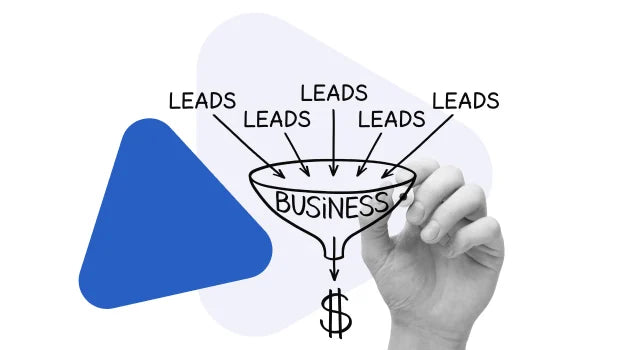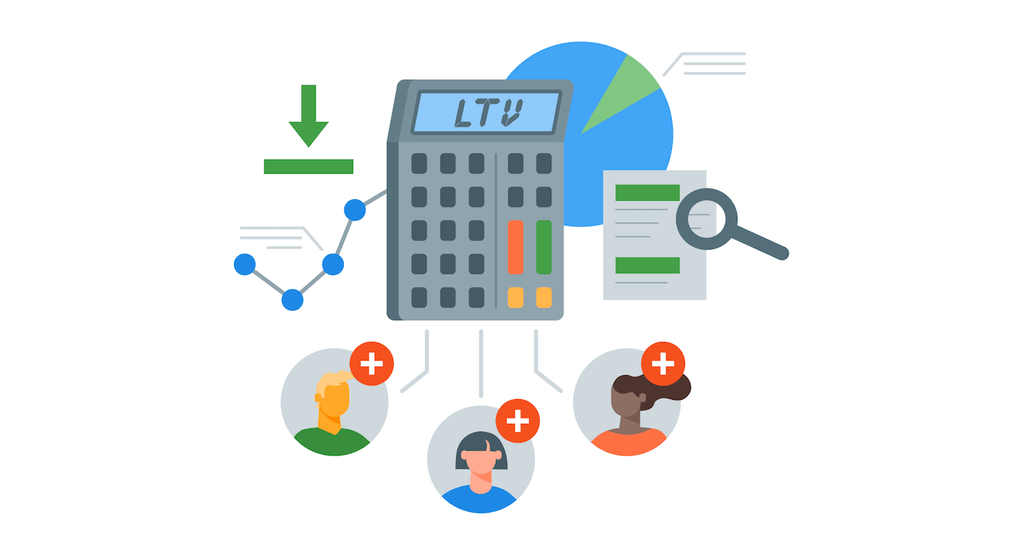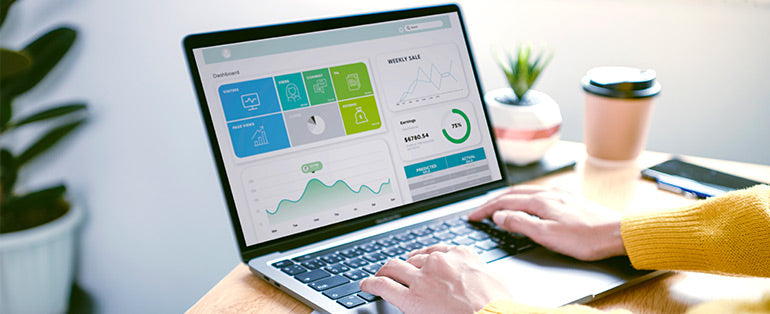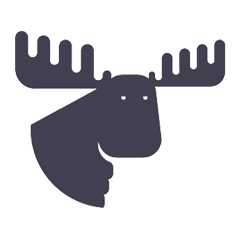Managing an e-commerce business involves the constant challenge of monitoring a series of performance indicators. These indicators, or metrics, are essential to understanding the sales success and growth of your online business. They not only highlight areas of success, but also signal where there may be issues that need attention.
In this article, we will talk about the 10 main indicators that you need to know to monitor the performance of your online business.
1) Sales Conversion
Sales conversion rate is a key metric that measures how many of your website visitors actually buy your products. To calculate it, you divide the total number of sales by the total number of visitors and multiply the result by 100 to get a percentage. For example, if your website had 1,000 visitors in a month and 50 sales, your conversion rate is 5%. This means that 5% of your website visitors became customers. Tracking this metric helps you understand how effective your website is at converting visitors into buyers.
Improving this rate can have a significant impact on your revenue. Small changes to the user experience, such as improving product descriptions, optimizing the checkout process, or increasing the loading speed of your website, can increase your conversion rate. It’s crucial to analyze and test different aspects of your website to identify opportunities for improvement.

2) Average Ticket
The average ticket is a metric that shows the average amount spent by each customer in your store. To calculate it, you divide the total revenue by the number of sales made. If in one month your online store made R$10,000 with 200 sales, the average ticket will be R$50. This number helps you understand how much your customers are willing to spend and is essential for planning sales and promotion strategies.
Increasing the average purchase price can be just as important as increasing the number of sales. Strategies such as cross-selling (selling related products) or up-selling (encouraging the purchase of a more expensive version of a product) are effective in this regard. Offering free shipping above a certain purchase amount can also encourage customers to buy more.
3) Website Traffic
Website traffic refers to the number of visitors your website receives. It’s important to not only track how many people visit your website, but also where they’re coming from. To calculate this metric, tools like Google Analytics can be used, which provide an overview of the total number of visits, as well as details like direct traffic, referral traffic, paid traffic, and social media traffic.
Understanding where your traffic comes from can help you optimize your marketing strategies. For example, if a large portion of your traffic comes from social media, investing more in these channels could be a good strategy. Additionally, knowing which pages attract the most visitors can tell you which products are most popular or which content is most engaging.
4) Cart Abandonment Rate
Cart abandonment rate measures how many users add products to their cart but then abandon their purchase. To calculate it, divide the number of completed transactions by the total number of carts created, subtract 1, and multiply by 100 to get the percentage. A high abandonment rate could indicate issues with the checkout process, high shipping prices, or a lack of payment options.
Reducing this rate is essential to increasing sales. This can be done by simplifying the checkout process, offering more payment options, or sending email reminders to customers who have abandoned their carts. Every abandoned cart is a lost sales opportunity, so understanding and improving this metric can have a huge impact on your bottom line.

5) Click-Through Rate (CTR)
Click-Through Rate (CTR) measures the effectiveness of your online ads by calculating the ratio of users who click on an ad to the total number of users who see it. To find this rate, divide the number of clicks your ad receives by the number of times it is displayed (impressions) and multiply by 100. A high CTR indicates that your ad is relevant and appealing to your target audience.
Improving CTR can involve optimizing your ad titles, descriptions, and images to make them more appealing. Testing different versions of your ads (A/B testing) can also help you identify which elements are most effective at attracting clicks. A high CTR contributes to a lower cost per click and greater cost efficiency for your ad campaigns.
6) Customer Acquisition Cost (CAC)
Customer Acquisition Cost is a metric that shows how much you spend to acquire a new customer. To calculate it, add up all the costs associated with customer acquisition (including advertising, marketing, sales team salaries, etc.) and divide by the total number of new customers acquired in the period. For example, if you spent $5,000 on marketing in a month and acquired 100 new customers, your CAC is $50 per customer.
Keeping your CAC low is crucial to the sustainability of your business. This can be achieved by optimizing your marketing campaigns to be more effective, improving your website conversion rate, or increasing your customer lifetime value (LTV). A healthy balance between CAC and LTV is essential for profitable growth.
7) Lifetime Value (LTV)
Lifetime Value is the total value you expect to earn from a customer over the course of their relationship with your store. To calculate LTV, multiply your average purchase by the number of purchases a customer makes in a year, and then multiply that by the average number of years they remain a customer. For example, if a customer spends an average of $100 per purchase, makes 5 purchases per year, and remains a customer for 3 years, your LTV would be $1,500.
Increasing LTV is essential for long-term growth. This can be done by improving the customer experience, offering high-quality products or services that encourage repeat purchases, or implementing loyalty programs. The higher the LTV, the more you can justify spending to acquire new customers.

8) Customer Retention Rate
Customer Retention Rate measures the percentage of customers who continue to shop at your store after their first purchase. To calculate it, divide the number of customers who made more than one purchase by the total number of customers in the same period, and multiply by 100. A high retention rate indicates that your store is retaining customers, which is crucial to increasing LTV and reducing CAC.
Improving customer retention involves creating an excellent shopping experience, providing quality customer service, and maintaining effective communication with customers. Loyalty programs and exclusive offers can also encourage customers to return.
9) Order Return Rate
The Return Rate measures the percentage of products that are returned by customers. To calculate it, divide the number of returned products by the total number of products sold and multiply by 100. A high return rate may indicate issues with product quality, inaccuracies in the product description, or customer dissatisfaction.
To reduce the return rate, it’s important to ensure accurate product descriptions, improve product quality, and provide an easy return process for customers. Understanding the reasons for returns can also help identify specific areas for improvement.
10) ROAS (Return on Ad Spend)
ROAS (Return on Advertising Spend) measures the effectiveness of your advertising campaigns by showing how much you earn for every dollar you spend on advertising. To calculate it, divide the revenue generated by your ads by the total cost of your ads. For example, if you spent $1,000 on ads and generated $5,000 in sales, your ROAS is 5. This means that for every $1 you spent on advertising, you earned $5 in sales.
Improving ROAS involves optimizing your advertising campaigns to reach the right audience, choosing the most effective keywords, and creating compelling ads. Tracking ROAS helps ensure that you’re investing efficiently in advertising.

SEO, CRO and UX Audit: A Complete Look at Online Success
We understand that analyzing these indicators and developing efficient strategies on your own can be a huge challenge. That’s why we offer our specialized consulting for online stores. In this service, we evaluate three pillars: UX (User Experience), SEO (Search Engine Optimization and Organic Traffic) and CRO (Conversion Rate Optimization).
Our team is ready to help you understand the current situation of your business and apply tailored solutions that improve these metrics. We believe that Consulting is the starting point for implementing an effective marketing and conversion strategy, generating insights and identifying errors that could harm your conversions.
Don't waste any more time trying to figure out where your ecommerce needs to improve. Get in touch with us!Click here and fill out our form to find out more details or request a no-obligation quote.
